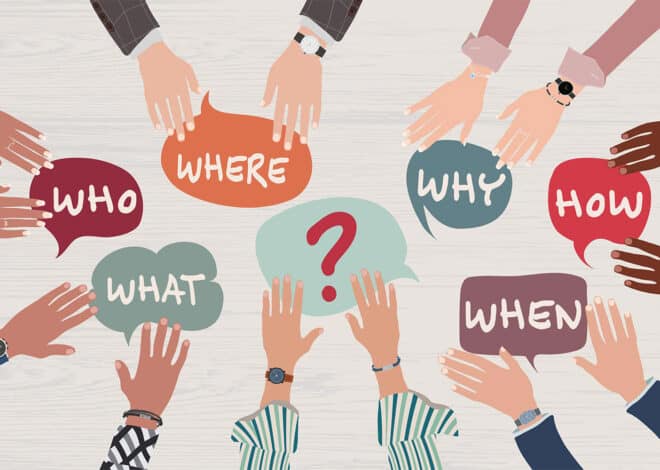5 Ways Nonprofits Can Balance Creativity and Structure
Learn how balancing creativity with structure can help your nonprofit foster innovation — without compromising your mission and goals.

Create an environment where creativity and structure can work together.
As it is for many nonprofit leaders, creativity is central to my values. As the Executive Director for Special Gifts Theatre (SGT) — an adaptive and inclusive theatre organization for individuals with disabilities that employs over 30 creative professionals — I am lucky to be caught in a constant flow of ideas for creative innovation. At SGT, one of our tag lines is “creative adaptation is at the core of what we do.” But again, like many in the nonprofit sector, I am limited by time and resources from exploring and trying all the ideas. So how do I determine which ones to follow — and which to put on hold?
As our best teachers once said: there are no bad ideas. However, we can’t play out every single one of the ideas we come across, either. In the nonprofit sphere, we simply don’t have the time or funding. And now, in this “post-pandemic” world, there might not even be a so-called normal to fall back on. Without the safety net of what has worked in the past, how do we keep moving forward — without falling flat on our faces?
To me, one thing is clear: deep thinking is necessary to nonprofit work.
And I don’t think I’m alone in this opinion. In fact, when I was reading this article on strategic inquiry, one sentence in particular stuck out: “Nonprofits and the leaders who run them need to stop seeing the critical work of deep thinking as a luxury and start seeing it as good stewardship and responsible leadership.”
As a nonprofit leader, I want to encourage new ideas and innovation while also accomplishing our mission and meeting our impact and fundraising goals. I want to build a sustainable organization while not being complacent with the status quo. So how can we balance creativity with structure to promote ultimate organizational health and growth?
A Case Study in Structured Innovation
Let’s take a look at creative arts organizations as an example. During the pandemic, rehearsing and presenting live performances for packed audiences simply wasn’t healthy, safe, or legal. But isolation drew people towards art and connection (perhaps more than ever).
For our inclusive theatre group at SGT, closing our doors wasn’t an option any of us wanted to consider, so we became (re)committed to adaptation in a new sense. We started holding Zoom classes and rehearsals and were super intentional about our lessons and activities to foster (virtual) connection.
When we eventually returned to in-person programs, we still had to adapt to COVID-19 safety measures that were in place, including social distancing, limiting contact, and requiring masks. We creatively structured programs and performances to limit the number of actors on stage. With a few script adaptations and “role sharing” (i.e., having multiple actors play the same role in different scenes) as well as creative costuming, we also limited cast contact by creating scene groups. And lastly, because masks cover facial expressions, we taught the actors to adopt more full-body gestures to communicate intent and emotion.
When I think about our most successful moments as an organization, they are illuminated by the marrying of creativity and structure — something we have a habit of doing brilliantly in the framework and implementation of our programs. The frameworks of SGT’s programs have educational and therapeutic structures with creative performing arts implementations. More specifically, we use the stage as a creative medium to teach important life skills, including social skills, speech/ language skills, and self-confidence. Conversation skills, for example, are practiced by following lines with scripted conversation with another character. Our staff then facilitate this process by breaking down the lines, changing them to work on certain speech skills and/or adapting them to make them within an actor’s capabilities so the actor can feel confident saying the line and not stumble through it.
Throughout my time in this innovative field, I’ve come to realize that the structured process of learning has to start with curious inquiry. At the same time, everyone must be on board, believing a successful solution is possible. In your nonprofit, how might you balance structure with innovation?
Five Techniques to Add Structure to Creative Problem Solving and Innovation
The following represent five techniques we’ve learned to use at SGT to balance innovation with structure. You might use these techniques when you or your team is looking for a solution to a problem that isn’t obvious, or when you’re trying to think out of the box with limited time and resources (aren’t we always?). Perhaps there’s a deadline or action needed sooner rather than later. Perhaps what you’ve been doing isn’t working and you need to quickly pivot and come up with alternatives. Hopefully these five ways to add structure to creative problem-solving and innovation will help!
1. Set expectations, limits, and boundaries.
We start every SGT class going over our schedule for the class as well as rules and expectations. The rules are set by the group; the teaching staff lead the discussion (to a degree that depends on the group’s age and abilities) while incorporating input from the student actors. Rules generally center around safety (for example, respect everyone’s personal space) and set the tone for everyone to try their best and have fun.
We’re not the only ones who do this: the MBA consultants at University of Chicago’s Booth School of Business I’ve worked with talk about this as defining scope and timeline.
Basically, this technique gets everyone on the same page. We’ve found if we don’t start here, we spend too much time reigning it all in.
At your nonprofit, you might use this step to punt some pain points, challenges, or ideas for a future project. Once you start diving into a problem to solve, there may be a series of problems and opportunities for innovation that follow, but you likely can’t tackle them all at once. By setting some boundaries and limits, you can table some conversations and ideas for future projects to address later, hopefully with a similar process.
2. Come up with ideas or possible options, and start to weigh them.
For both our student actors with disabilities and leaders in the nonprofit sector alike, staring at a blank page with the blinking cursor or being put on the spot and asked how your character feels in a moment is overwhelming. We’ve all experienced the panic of the drawn out “Ummm…”
But never fear! This is where your best teachers’ advice — no bad ideas — comes into play. Work together to come up with some options. At SGT, when a student actor doesn’t know how to connect with the character, we look at a feeling wheel — happy, sad, excited, scared, etc. — and build a more nuanced understanding of the character’s story and motivation from there.
For innovation at your nonprofit, start big and narrow in later. I like to abide by the eternal advice: don’t yuck my yum. Don’t shoot down ideas right away that will limit future ideas. Several options likely are plausible — that’s the thing about creativity — and there’s no such thing as a wrong answer.
You can begin to assess the amount of risk you are willing to take when you start weighing your options. For example, you may want to pilot a new approach with one program or process rather than implementing it across the board. Or maybe a solution requires more operational support than your organization currently has, so it’s not the best option. On the other hand, you may decide that big changes offer a high return on investment, and with some adjustments to operations, it may be worth taking the plunge.
3. Let it sit, cook, and breathe.
Give some time for the ideas, options, or creative juices to marinate and flow. At SGT, our student actors have different processing speeds. Sometimes someone just needs an extra breath to answer a question or to recall and recite their line — without someone else jumping in and cue-ing them right away. After all, creativity — and the critical thinking that comes along with it — takes time.
After a meeting, discussion, or presentation, it might be best to not act immediately. Instead, take it all in and think on it before deciding which direction to take. This might take a minute, a few days, or a month, and the timeframe might just depend on what kind of question you are interrogating. Some decisions need to be made quickly while others achieve clarity with a little bit of time. Chances are if it is a big decision, you should probably give yourself some time to think it through.
But be transparent in this thought process — you don’t want to leave the rest of your team hanging.
4. Stay positive by tracking and celebrating progress as a team.
The creative process isn’t always linear — in fact, it often isn’t. It may feel like two steps forward and one step back or a winding path that finally circles in. Through the creative process you may discover doors to new and exciting opportunities. And who knows: the end point may even change.
But progress can still be tracked, benchmarks and milestones can be celebrated, and high fives can be given. This can include sharing updates during staff and board meetings. Here, creating a dashboard with charts and metrics can really illuminate progress and trends.
And recognition is important. Make sure you are recognizing the efforts of teammates who have worked hard to implement some new and creative ideas and processes. After all, you need them to feel good about their work. At SGT, we celebrate success with our student actors at every turn and acknowledge that success looks different for each individual. By having those expectations, limits, and boundaries (step 1), you’ll have a sense of what you’re reaching for. Have good communication to share prioritization. Stay positive and visualize success.
5. Look out for your people: take a break and recuperate.
Nonprofit work, creative work, strategic inquiry — it’s all never-ending. There is always more that can be done.
But having a structure in place that gives breaks will help avoid burnout. Taking time off, being flexible on deadlines that don’t need to be firm, and understanding when things don’t go as planned are important parts of the creative process. This article has good suggestions for ways to view and incorporate self-care in your organization.
AT SGT, our student actors need breaks, and they often come back refreshed — just like our employees do. We work to recognize the demands and juggling that happen in everyone’s personal lives outside of the specific context: family responsibilities, relationships, physical and mental health, etc. You need to make sure you are giving your team time to recuperate and recharge. Ultimately, structuring downtime will strengthen your team and promote more creativity.
Just because it’s structured doesn’t mean it’s a science.
The above structural components are not an exact recipe or a science, but they interplay with creativity to achieve forward motion.
Keep in mind, there is never (or at least rarely ever) one right answer or solution. Whenever you are considering possible options, there are usually several that could and would work. Everyone’s professional background, experience, and biases ultimately determine what they think is “best” — and it might be an indication of what you are most comfortable with. Trying to find a way to balance these creative ideas and opinions ultimately takes creativity, too.
So for a nonprofit, innovation is a balancing act — balancing the creativity and the “anything is possible” mindset with the limited resources that exist within our sector. I suggest building in some structure and then letting the creativity dance. After all, what’s progress without some forward motion?
About the Author
Elise Larsen, MA, R-DMT (Registered Dance/Movement Therapist), is the Executive Director at Special Gifts Theatre. She joined the organization in 2011 and served as teacher, choreographer, and site supervisor prior to becoming Executive Director in 2017. As Executive Director, Elise is responsible for overseeing the organization’s administration, fundraising, and programs and has sustained and grown the inclusive theatre organization through the Covid-19 pandemic. Elise earned a BFA degree in Dance from the University of Illinois, Urbana-Champaign, and an MA in Dance/Movement Therapy and Counseling from Columbia College Chicago. When she’s not working, Elise enjoys spending time outside with her husband and three children.
Articles on Blue Avocado do not provide legal representation or legal advice and should not be used as a substitute for advice or legal counsel. Blue Avocado provides space for the nonprofit sector to express new ideas. Views represented in Blue Avocado do not necessarily express the opinion of the publication or its publisher.












Sounds like a great leader and great organization